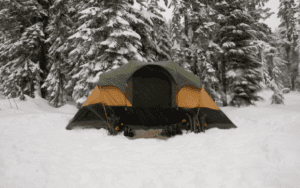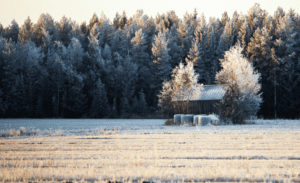How to Adjust Air Quality to Stay Warm During Winter Travels

After a few camping over the years, I have found a sleep strategy such as applying this better air quality guide that works best for me. Sleeping bags are often equipped with a numeric fever test. These temperature tests should be considered a lower limit of use, not a temperature at which the user can sleep comfortably. The biggest impact of these choices is the warmth provided by your sleeping bag. So, I would like to share my experiences to help others avoid a night of suffering in the cold.
Utilize Sleeping Pads As Source of Insulation
 A sleeping pad provides anglers with essential comfort and protection against the heat-absorbing capacity of the ground. The ground extracts an incredible amount of heat from the entire body, so insulation under the sleeping bag is vital in the winter. Additionally, when the sleeping bag stays with the insulation material, the back is compressed underneath the client’s entire body. So, the client’s spine is straightened by the sleeping bag’s insulating substance.
A sleeping pad provides anglers with essential comfort and protection against the heat-absorbing capacity of the ground. The ground extracts an incredible amount of heat from the entire body, so insulation under the sleeping bag is vital in the winter. Additionally, when the sleeping bag stays with the insulation material, the back is compressed underneath the client’s entire body. So, the client’s spine is straightened by the sleeping bag’s insulating substance.
Closed-cell foam tops are usually the cheapest and most durable type of mattress available. For this reason, they are usually made of metal coated foam that could reflect body heat towards the sleeper. They are normally lightweight but bulky, but can also be an inexpensive way to increase warmth while sleeping.
Understand Sleeping Pads’ Temperature Rating
these lightweight pillows are much more compact than their foam cousins, so they are often inflated with a pump. When choosing an inflatable pillow, make sure it is a ventilated inflatable pillow, as not all inflatable pillows are designed to keep your clients warm. These pads are made of open-cell foam that develops when the valves in the padding are open, and they don’t require manual inflation because the foam fully expands when exposed to air and doesn’t compress. They are usually more comfortable than the previous options but tend to be thicker.
General information indicates not to take a sleeping bag less than 10 degrees above its lower limit. For example, a 20-degree bag (the average maximum temperature of “3-year-olds”) can be used comfortably down to about 30 degrees if the consumer is wearing appropriate clothing and has an insulating mat. I almost always work with a lightweight down jacket while hiking, because I will use it both when I wake up and sleep.
Make A Vent in Your Sleeping Pads
 A double-walled tent contains only two layers, usually a tightly knit or sturdy interior and a waterproof outer tent, which can help keep occupants warmer than single-walled outlets. To reduce the likelihood of condensation forming and occupants getting wet, ensure the tent has a vent or leave part of the outer tent sheet out to ventilate the tent. It will warm the sleeping bag faster than a person’s body heat, and can also keep a child’s feet warm. It’s good advice not to let yourself get chilly before you go to bed.
A double-walled tent contains only two layers, usually a tightly knit or sturdy interior and a waterproof outer tent, which can help keep occupants warmer than single-walled outlets. To reduce the likelihood of condensation forming and occupants getting wet, ensure the tent has a vent or leave part of the outer tent sheet out to ventilate the tent. It will warm the sleeping bag faster than a person’s body heat, and can also keep a child’s feet warm. It’s good advice not to let yourself get chilly before you go to bed.
Also, a large unused space in a sleeping bag indicates that there is extra space that needs to be heated, resulting in more time required to warm up. If we don’t take in enough calories, our bodies may lack the fuel to generate more heat. Our bodies use heat to keep our urine warm, so come to bed with an empty bladder …
Continue reading »